what i need to create a one shot
What is a quick-reference guide
A quick-reference guide is any documentation that provides a one- or two-page set up of condensed instructions on how to employ a product. They can be highly detailed or very simple, depending on what's needed.
Nearly every product requires some kind of documentation to assist customers understand how to apply it. Depending on the production, sometimes those user guides or product manuals can be hundreds of pages long with pages full of long blocks of text.
In other words, they can be pretty daunting, particularly for new users.
Obviously, you need documentation that covers everything your product can do. Simply sometimes your customers just desire to know something without having to wade through a ton of content to find information technology.
A quick-reference guide is a perfect way to provide your users with a wealth of apace accessible information in an easy-to-digest, engaging way.
Here'due south what you lot'll larn:
- Why is it of import?
- The essential elements to creating a bang-up quick-reference guide.
- How to make a quick reference guide in six easy steps.
- Common types of quick reference guides.
- Quick-reference guide dos and don'ts.
Create a quick-reference guide (Free Template)
Download a free trial of Snagit to chop-chop and hands make your ain quick-reference guide.
Download
Why is information technology important?
They are particularly useful when a product or service has a number of different or avant-garde functions, but can be operated more only, as well.
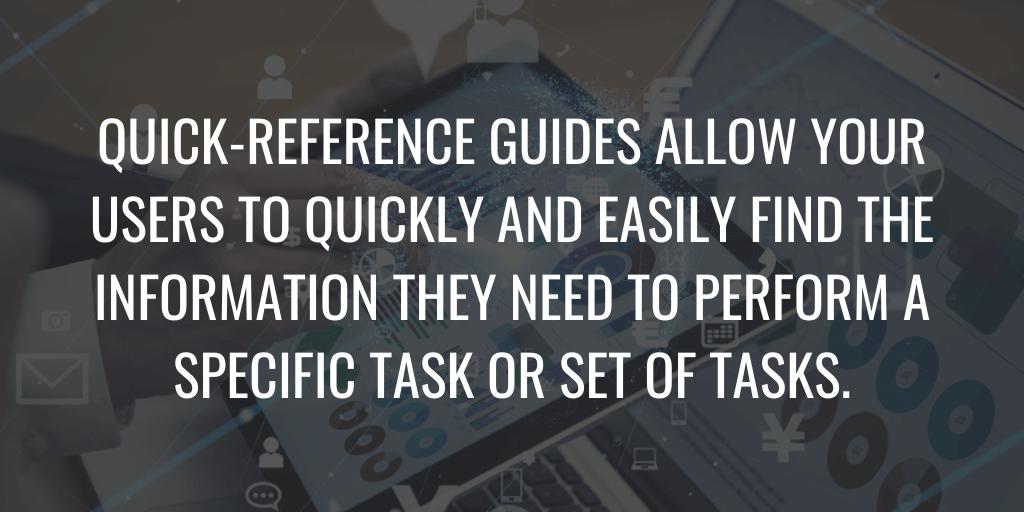
For example, a few years ago, I upgraded my basic stove with a nicer, more avant-garde model. While the oven on the old stove was basically on or off with temperature settings, my new one came with all kinds of new features.
In that location was a regular Bake setting, every bit well as Convection Bake, Roast, Bread Proof, and more than. Additionally, the new one has buttons and a digital readout while the old one was just a knob you turned to plow information technology on and set the temperature.
Now, I've baked a loaf of breadstuff or two in my day, simply let's exist honest. About of the fourth dimension when I employ my oven I'chiliad heating upward pizza rolls or toasting some garlic staff of life, so I mostly use the regular bake setting.
Luckily, the manufacturer provided a quick-start guide (1 of the about mutual types of quick-reference guides) to help me do bones baking. In a few short steps, I knew exactly what I needed to practice to utilize the oven for its most basic role.
So, when I wanted to work with the more advanced features, I could delve deeper into the full product transmission.
Quick-reference guides allow your users to quickly and easily find the data they need to perform a specific job or fix of tasks. They don't supercede a full user transmission, simply they provide a fantastic supplemental mode to deliver information.
Thankfully Snagit makes it super simple to create a quick-reference guide.
Here'southward everything you need to know nearly making a loftier-quality quick-reference guide in no-fourth dimension.
Is a quick-start guide a quick-reference guide?
The quick answer: Yep!
As noted above, a quick-start guide is 1 of the well-nigh mutual types of quick-reference guides. So, while not all quick-reference guides are quick-start guides, all quick-starting time guides are quick-reference guides.
Brand sense?
How to make a quick-reference guide in six easy steps
And, if you don't accept the right tools, this is where things tin can get really tricky. It tin be fourth dimension-consuming to try and put everything into a Microsoft Word document, for instance.
And if you don't accept admission to a professional person designer, ensuring your quick-reference guide looks great can be a bit daunting.
Merely it doesn't have to be that fashion.
I'll allow you lot in on a little secret: When it comes to designing peachy content, Snagit 2020's templates are my superpower.
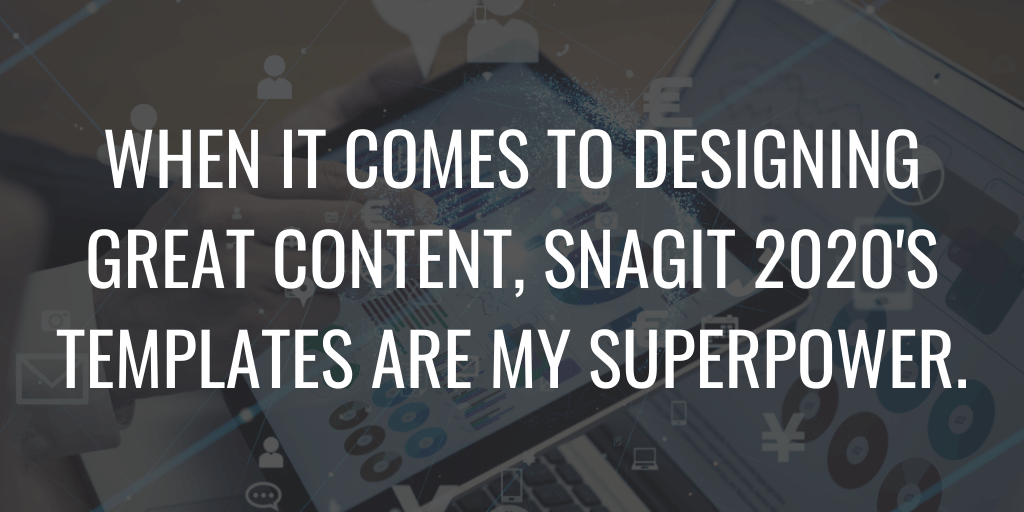
They provide professional-looking designs you tin can utilise to create quick how-to guides with drag-and-drib ease.
Snagit 2020 comes stocked with templates, but you can also download dozens more than with TechSmith Assets for Snagit.
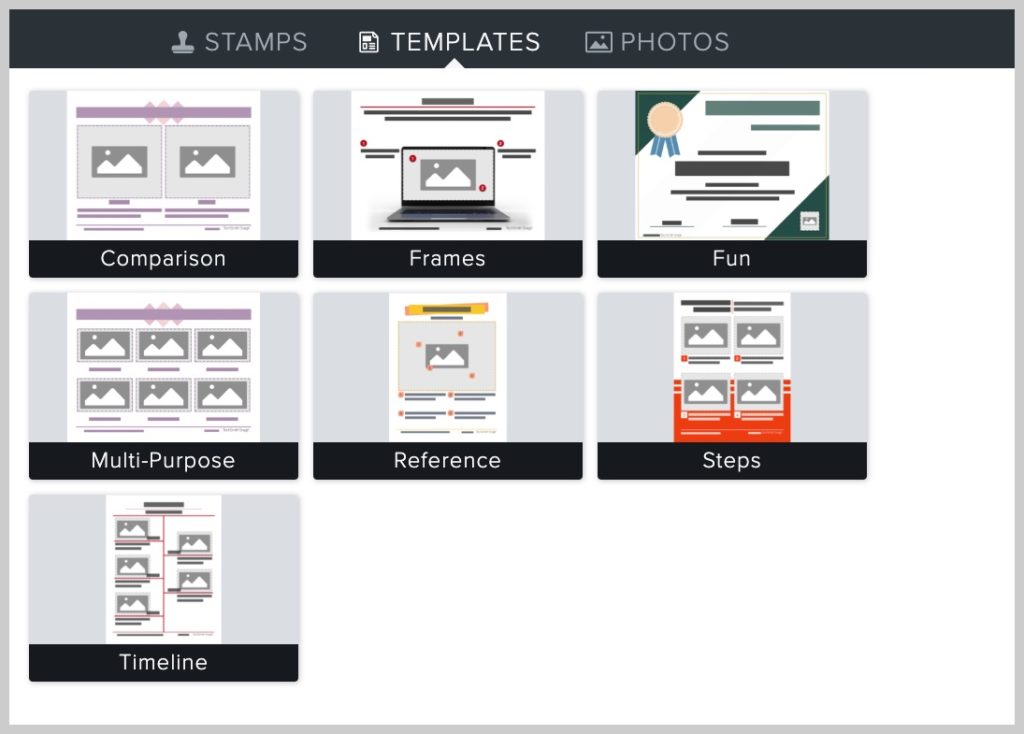
Snagit templates allow you lot to create an array of dissimilar kinds of how-tos, process documents, tutorials, and more than.
Simply, for this example, allow's say I wanted to create a quick-reference guide for five of the nearly mutual tools in Snagit.
Stride 1. Take your screenshots
Kickoff, take all the screenshots you need and make any annotations (arrows, text, etc.) yous desire to include in the graphic.
Step 2. Create your template
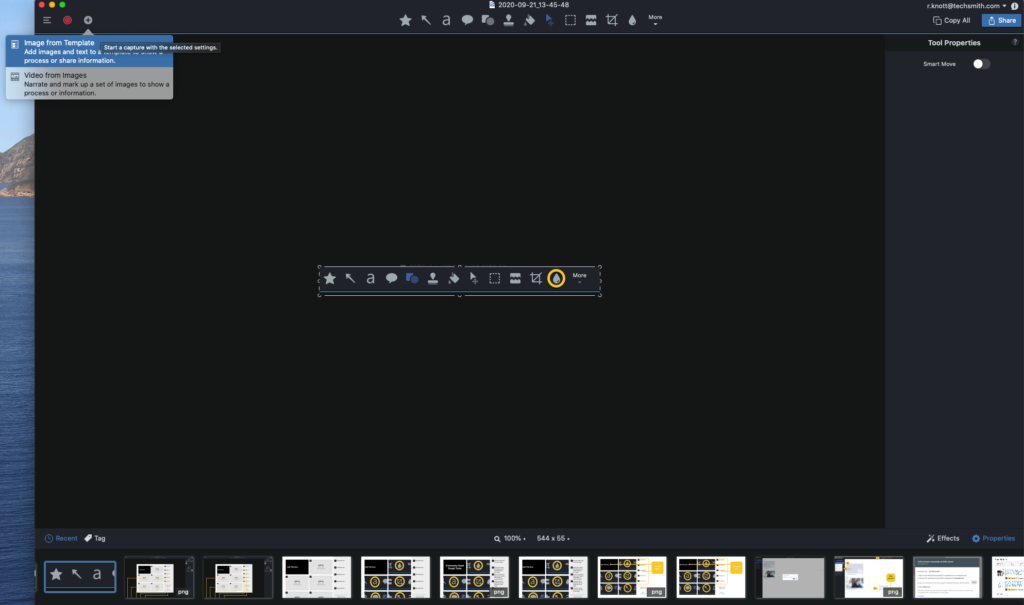
Then, in the Snagit editor, choose Create > Create Image from Template.
Step 3. Cull a template
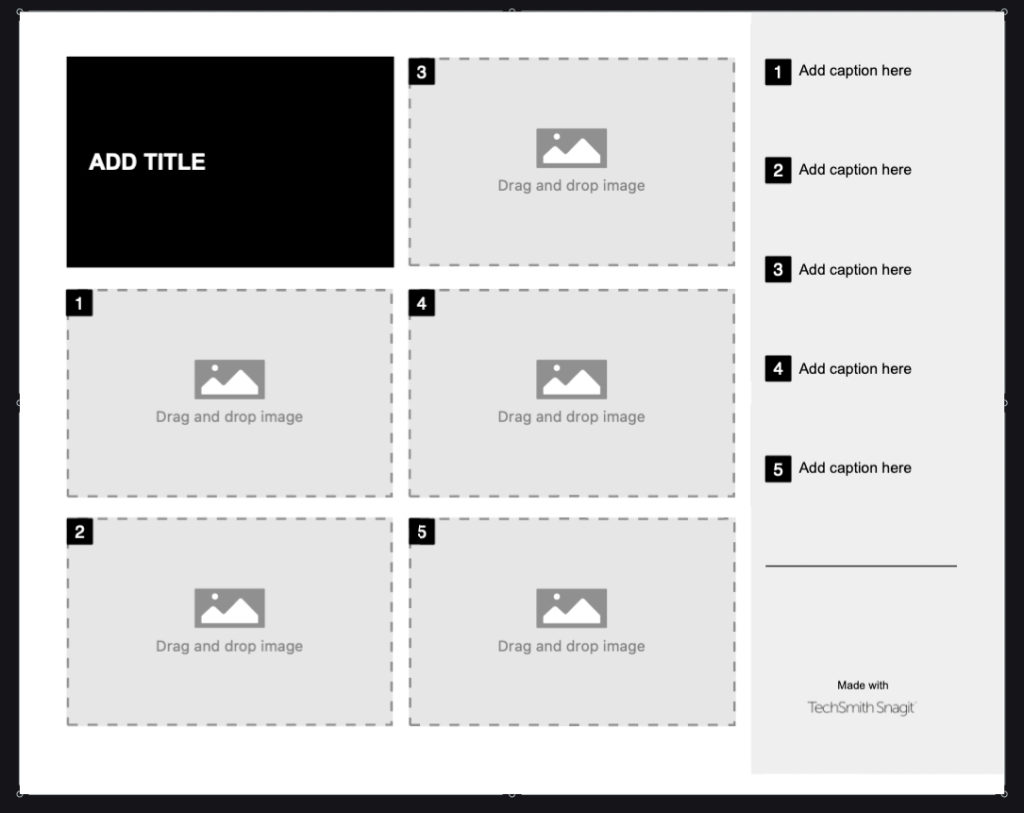
Select the template you want to use. There are plenty of quick-reference guide templates to cull from.
For this example, I chose the Basic 5 Steps Landscape. This template is intended every bit a pace-by-pace guide, merely it'due south perfect for this, as well.
Stride iv. Add images
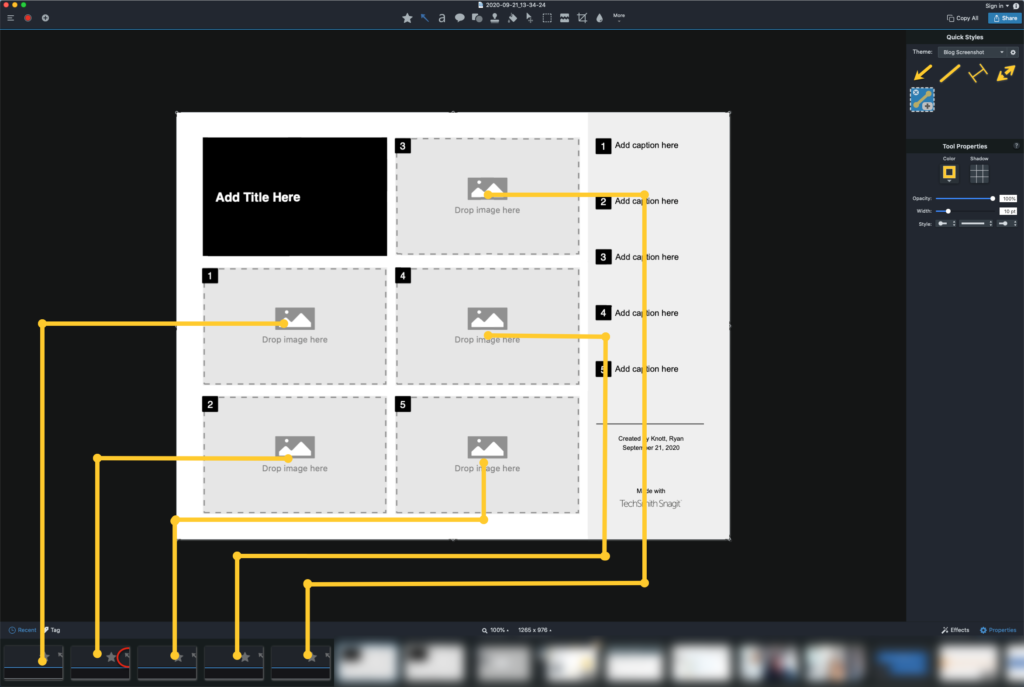
From the tray at the bottom of the Snagit editor (the Contempo Images tray), elevate your screenshots to the placeholders in the template.
Step 5. Resize images
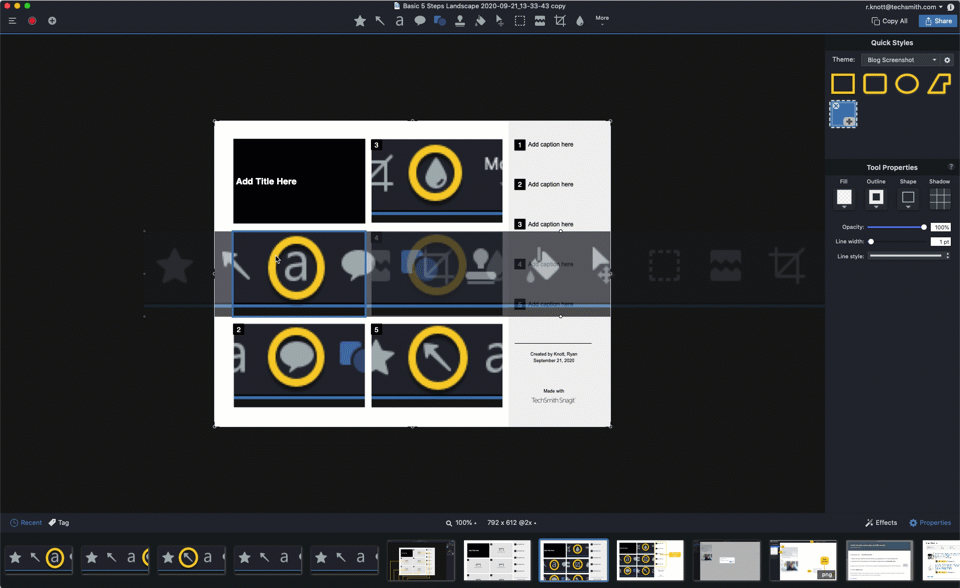
Resize or otherwise adjust your screenshots as needed.
Footstep 6. Add written content
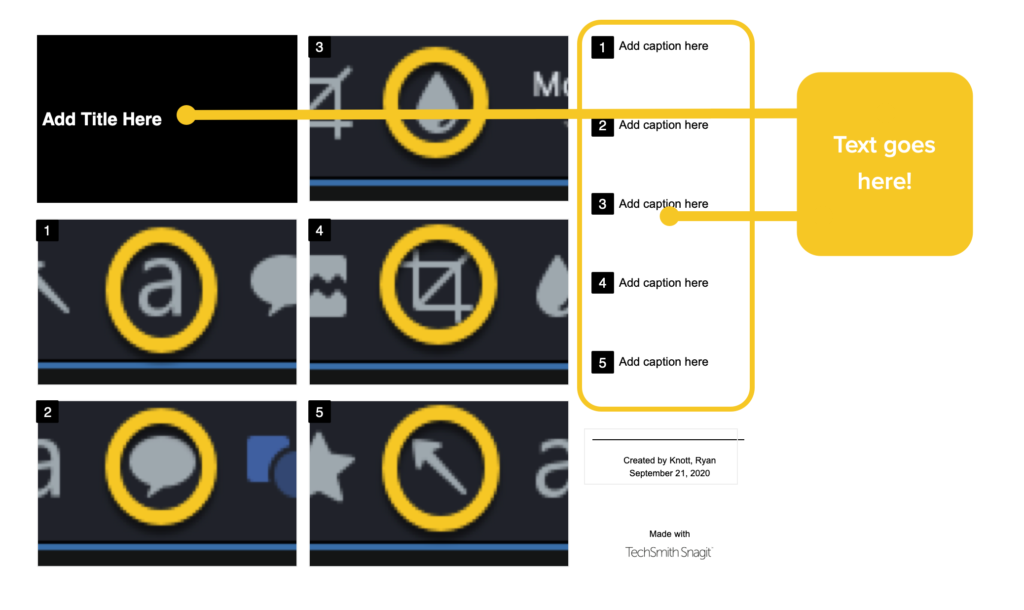
Add your descriptions in the corresponding sections in the space at the right of the template, and add together a title in the championship box.
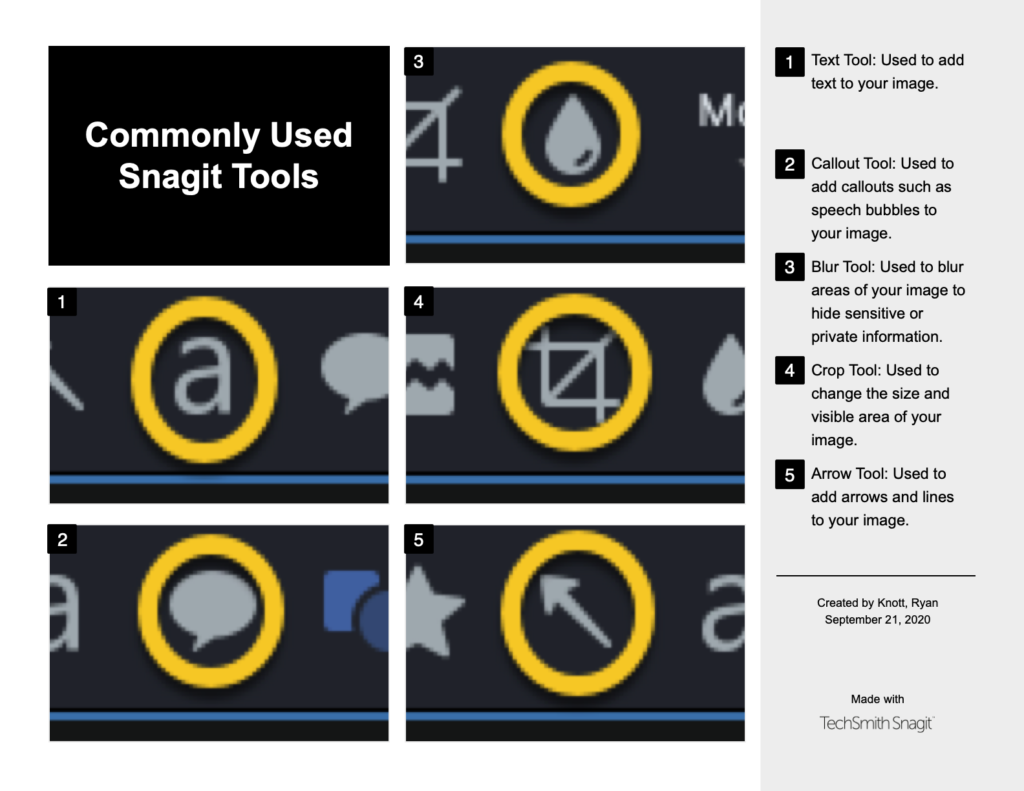
And you're done!
It took me longer to write out the steps than information technology did to create this little quick-reference guide.
Afterward, you can share save it, share out a link, or print it off to put on your desk-bound.
Common types of quick-reference guides
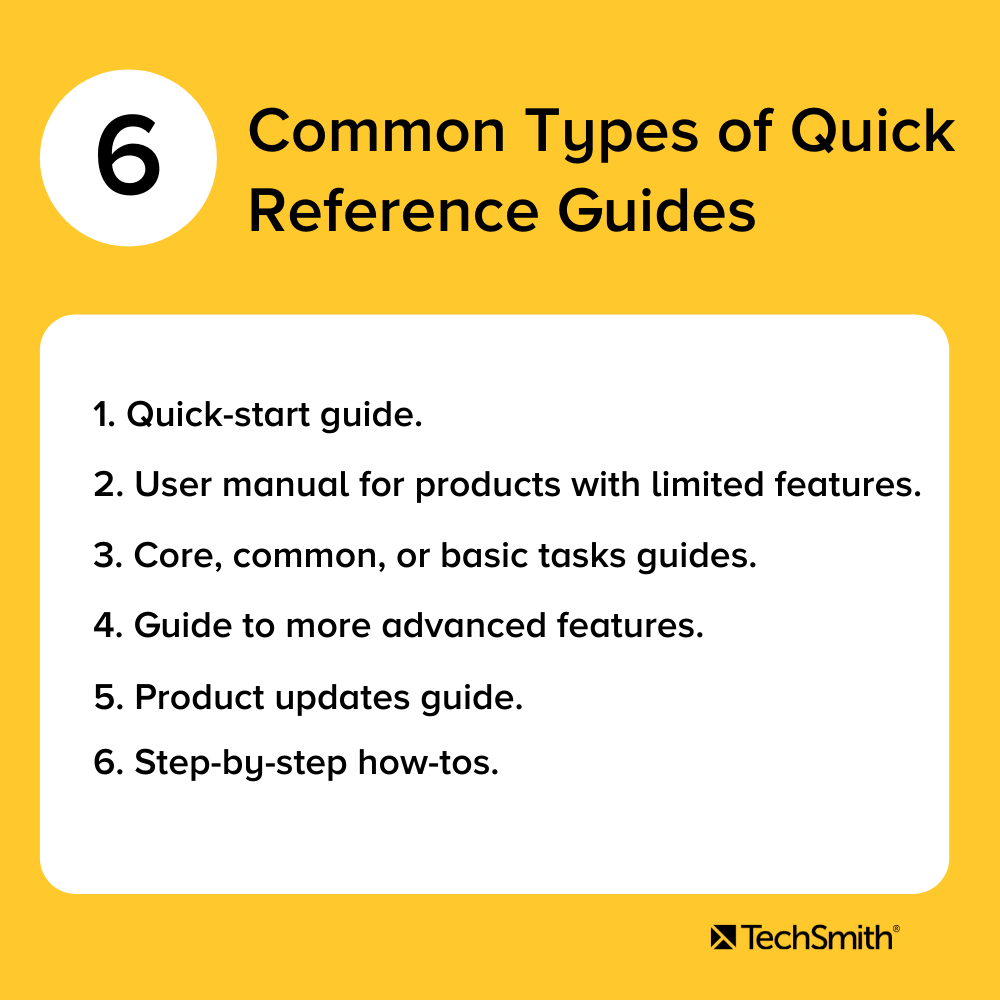
In that location are a number of different types of quick-reference guides, so yous want to know exactly what your audition needs earlier creating 1.
Does your audience demand a fast and easy way to become started using your product's most basic features? So you want to create a quick-start guide.
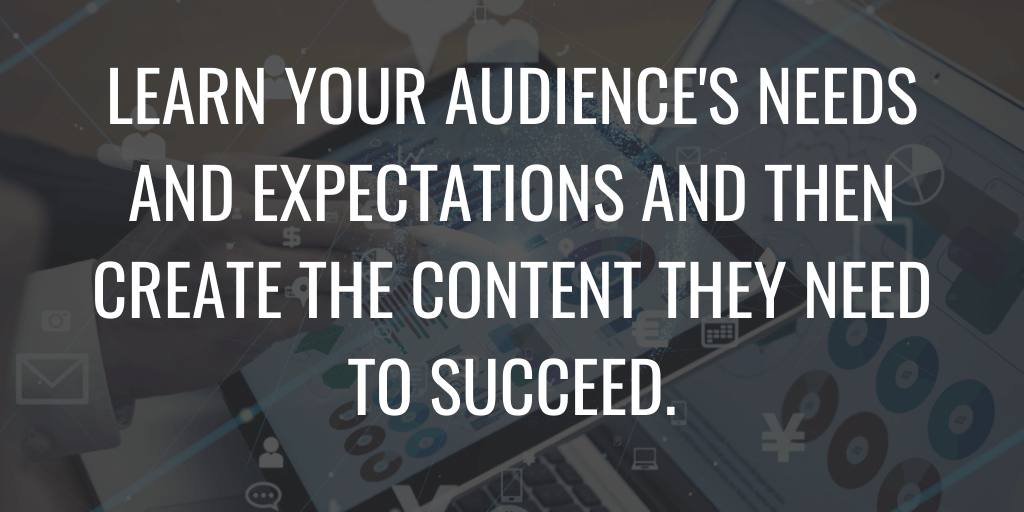
Or, maybe they demand a one-end reference for agreement your software's UX? How about a glossary of common terms? Or an overview of your product's core features?
Or, imagine your users are moving from one piece of software to yours. What information might they need to make the transition easier? Think nearly things like differences in menu trees, icons, characteristic names, etc.
All of those things (and Mode more) can be accomplished with a quick-reference guide.
Merely, obviously, all of those are very different applications. Learn your audience'due south needs and expectations and so create the content they demand to succeed.
- Quick-start guide
Help your users become up and running quickly with your product. - Cadre or basic job guides
Like to a quick-start guide, but offers an overview of how to use your product or service's almost basic or core features. - Guide to more advanced features
In one case your users are ready to take things to a new level, use a quick-reference guide to introduce them to other functionality or features. - Guide to product changes
Did your software recently update? Use a quick-reference guide to walk your users through the changes. - Stride-by-step how-to
Got a process you demand to explain? Prove information technology! - User transmission for products with limited features or functionality
If your product doesn't crave a huge manual, a quick-reference guide may be all the documentation you lot demand.
Essential elements to creating a great quick-reference or quick-starting time guide
Know your audition and their needs
The more of these blogs I write, the more I become enlightened of consequent themes. Creating the content your audition wants (and not necessarily what you want to tell them) is one of the most consequent.
As noted in this commodity virtually how to create more constructive client instruction content, there are a number of means to effigy out exactly what that is, including online forums, client surveys, or even from your ain technical support staff.
Regardless of how you lot get information technology, delivering content your customers desire and need will get a long mode in ensuring the success of your quick-reference materials.
Simplicity is key
The whole point of a quick-reference guide is to make data easily and readily accessible, and so exist sure it's simple to understand.
Use visuals
Avoid huge blocks of text as much every bit possible Instead, use visual elements such equally screenshots with markup, icons, or production photos — and merely plenty text to ensure your points are clear.
Include only essential data
Go along it to 1 or two pages. Don't try to encompass everything from your full user manual. Call back about it — a quick-reference guide that needs a tabular array of contents probably isn't all that quick.
Choose the well-nigh important data to reach a detail job or that otherwise conveys what you desire to show. Boil down complex concepts into their most basic form.
Know what to go out in and what to exit out. Remember, you lot tin can ever create some other quick-reference guide to cover other important topics.
Utilize a uncomplicated and easy-to-follow layout
If your quick-reference guide isn't visually appealing and like shooting fish in a barrel to follow, your users won't find information technology useful.
Y'all don't have to create a total work of art to make a good quick reference guide. Sometimes a simple screenshot annotated with arrows, text, etc. tin exist plenty to get someone the data they need.
Visual Content
I feel similar I tin't emphasize this enough: Your quick-reference guide just won't be every bit effective, engaging, and useful as it tin can be without practiced images, icons, screenshots, or other visual elements.
Images draw the centre and aid provide anchor points to your content, helping your users speedily and easily identify important points of information.
In fact, our Value of Visuals research found that people learn better with images and text vs. text solitary.
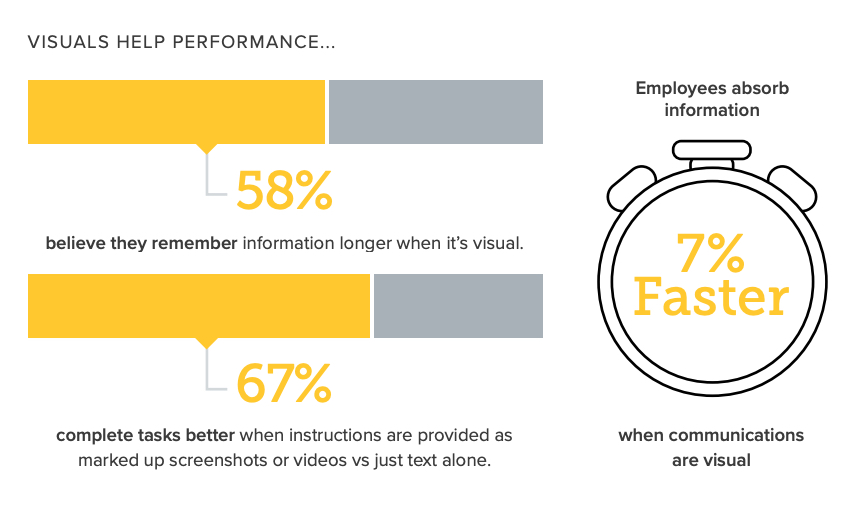
You can learn all about how valuable visual communication can be with this awesome infographic.
And, have you ever heard the terms a picture is worth a thou words? Well, it turns out the best mode to show something is to actually Testify information technology.
A practiced paradigm tin can convey a ton of information and help reduce the text density of your content and brand information technology more user-friendly.
Our friends at Venngage accept some more than information on the importance of visual content.
Quick-reference guide dos and don'ts
Not all quick-reference guides will be every bit simple as the ane I created. Some will need more text, others volition need more than images. Some will need more complex layouts. Depending on the subject, it may be longer.
There is a broad range of types of and uses for quick-reference guides, and it would be incommunicable to cover them all here. But, there are some common dos and don'ts that are pretty universal:
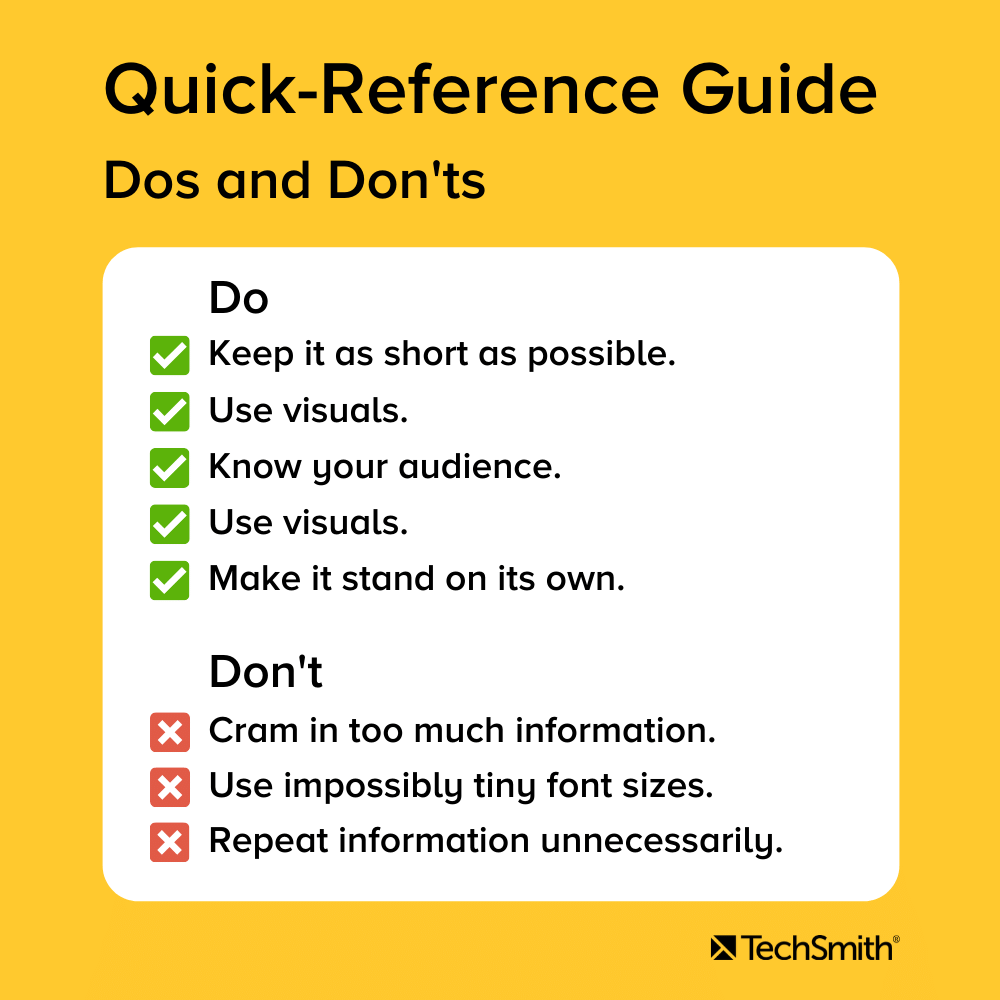
Practise
- Proceed it as curt as possible. One to two pages is best.
- Apply visuals like annotated screenshots, icons, production or UX images, etc.
- Use a sensible, easy-to-follow layout, with clear headings and subheadings every bit needed.
- Know your audience and what they need.
- Make it stand on its own. Users shouldn't have to look in your manual to understand your quick-reference guide.
Don't
- Cram in also much information. You're non trying to fit your whole user transmission into this one guide.
- Brand your font sizes then small no ane tin read them without an electron microscope.
- Repeat information unnecessarily.
Get started creating awesome quick-reference guides with Snagit 2020
Quick-reference guides are a great way to provide your users and customers with fast and handy instructions for the nigh common features of your product or service.
From screenshots and image editing to templates and image assets, Snagit 2020 makes it incredibly piece of cake to create useful, engaging, and visually highly-seasoned quick-reference guides
What is a quick-reference guide?
A quick-reference guide is any documentation that provides a one- or two-page set of condensed instructions on how to utilise a production.
Is a quick-start guide a blazon of quick-reference guide?
Aye! A quick-showtime guide helps a client or user rapidly get started with your product or service without having to know the more intricate or advanced features.
What are some common types of quick-reference guides?
Quick-start guide
Core or basic tasks guide
Guide to more avant-garde features
Guide to production changes
Step-by-stride how-to
User transmission for products with limited features or functionality
What are the essential elements for creating a good quick-reference guide?
Know your audience and their needs.
Keep it uncomplicated.
Good, clean, like shooting fish in a barrel-to-follow layout/design.
Use visual content such every bit images and illustrations.
Create a quick-reference guide (Free Template)
Download a complimentary trial of Snagit to rapidly and easily make your own quick-reference guide.
Download
Note: This article was originally published in April 2020, but has been updated with new data.
Source: https://www.techsmith.com/blog/quick-reference-guide/
0 Response to "what i need to create a one shot"
Post a Comment